Are You at Risk for Depression?
 An excerpt from Beneath the Surface by Kristi Hugstad
An excerpt from Beneath the Surface by Kristi Hugstad
Ever since author Kristi Hugstad’s husband, after years of struggling with clinical depression, completed suicide in 2012 by running in front of a train, she has dedicated her life to helping to abolish the stigma of mental illness and suicide.
That mission is what inspired her to write Beneath the Surface: A Teen’s Guide to Reaching Out When You or Your Friend Is in Crisis, which speaks candidly to today’s youth — and the parents, teachers, and coaches who love them — about the anxiety, depression, and suicide attempts that far too often accompany the unique challenges that face their generation. We hope you’ll enjoy this excerpt from the book.
# # #
Most children grow up thinking their home, family, and upbringing are “normal,” even when they’re not. Children and teens living in a home where one or both parents are depressed often don’t realize this isn’t the norm — though this situation is more common than you may think.
In fact, fifteen million kids in the United States have parents with depression.
As a result, these fifteen million kids are at greater risk of developing depression themselves. But depression can happen to anyone. It can occur after a trauma or during a stressful situation, or it can develop due to someone’s particular brain chemistry. Why someone develops depression is important, particularly if it’s due to situational or lifestyle factors, which can be changed. But more important than the why is the how. As in, how do you deal with depression? That is the real focus of this book because depression can put someone at risk for any number of issues, including suicide. The faster you recognize the symptoms of depression, the faster you can get treatment and reduce the risk of other, even more serious issues. Additionally, the more you know, the better you can help others.
Are you at risk for depression? Consider the following questions, all of which may indicate that someone is already depressed or at risk for developing depression. If you find yourself answering affirmatively even to several questions, it doesn’t necessarily mean you’re depressed, but you may have an increased risk of becoming so. Later we’ll talk about what you can do if you or someone you love is suffering from depression.
Depression Self-Assessment
Do you currently live with a family member who suffers from depression?
Studies have shown that living with a mother or father who has depression, whether the cause is environmental or genetic, increases your own risk of developing the condition. You may not know if a parent suffers from depression; if you feel safe asking, do so. If not, consider whether they exhibit the signs described in this book. Further, you don’t have to live with a depressed family member to be at risk.
Does life feel pointless?
Everyone may occasionally feel hopeless as they navigate through school, work, and life. But if a hopeless feeling persists day after day and affects your daily behavior, it could be a sign of depression.
Do you find it impossible to concentrate?
Depression can make it hard to concentrate even when you’re reading or watching something you love.
Have you withdrawn from your friends and family?
It’s important to do your own thing and be independent, but this should be balanced with a healthy amount of socializing and bonding with friends and family. Depression sufferers often turn down opportunities to be with others simply to be alone.
Have you noticed a sudden change in your weight?
Extreme weight loss or gain can be a symptom of depression. If you’ve lost your appetite or find yourself seeking comfort in food, this may be because your brain chemistry is being affected by depression.
Do you have insomnia, or do you sleep too much?
Look, teenagers need their sleep and often don’t get enough. But if you go through long periods of sleeplessness or of sleeping too much, depression may be the reason.
Do you have physical pain that won’t go away?
Depression doesn’t just cause emotional pain. Depression can cause chemical imbalances in your brain that make you perceive pain differently, and it could be the reason for a persistent physical pain that doctors can’t find a reason for.
Have your grades dropped? Have you stopped participating in extracurriculars?
Depression has two best friends: apathy and lack of energy. These can combine to affect your performance in school and your extracurricular activities, and they can sap your passion for activities you once loved.
Have you ever thought of suicide?
If you answer yes, you’re not alone, and suicidal thoughts can be caused by depression. However, if you’re currently thinking about suicide, seek help and treatment. Tell someone. With counseling and, if necessary, proper medication, you will begin to feel better. When you’re suffering from depression, the idea of feeling better might be difficult to imagine. This is the time to practice trust and courage.
# # #
 Kristi Hugstad is the author of Beneath the Surface: A Teen’s Guide to Reaching Out when You or Your Friend Is in Crisis. Ever since her husband completed suicide in 2012, after years of struggling with clinical depression, by running in front of a train, she has dedicated her life to helping to abolish the stigma of mental illness and suicide. A certified grief recovery specialist, Kristi frequently speaks at high schools. Visit her online at https://www.thegriefgirl.com.
Kristi Hugstad is the author of Beneath the Surface: A Teen’s Guide to Reaching Out when You or Your Friend Is in Crisis. Ever since her husband completed suicide in 2012, after years of struggling with clinical depression, by running in front of a train, she has dedicated her life to helping to abolish the stigma of mental illness and suicide. A certified grief recovery specialist, Kristi frequently speaks at high schools. Visit her online at https://www.thegriefgirl.com.
Excerpted from the book Beneath the Surface. Copyright ©2019 by Kristi Hugstad. Printed with permission from New World Library — www.newworldlibrary.com.










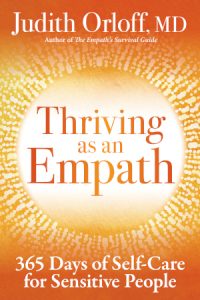 **Excerpted from “Thriving as an Empath: 365 Days of Self-Care for Sensitive People” (Sounds True, Oct. 22, 2019)
**Excerpted from “Thriving as an Empath: 365 Days of Self-Care for Sensitive People” (Sounds True, Oct. 22, 2019) Judith Orloff, M.D., is a New York Times bestselling author, a member of the UCLA Psychiatric Clinical Faculty, and has a Facebook Empath Support Community with more than 6,000 members. She has been featured on The Today Show, CNN, and in Oprah Magazine, the New York Times and more. Her new book,
Judith Orloff, M.D., is a New York Times bestselling author, a member of the UCLA Psychiatric Clinical Faculty, and has a Facebook Empath Support Community with more than 6,000 members. She has been featured on The Today Show, CNN, and in Oprah Magazine, the New York Times and more. Her new book, 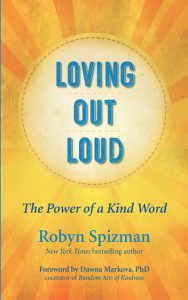 An excerpt from Loving Out Loud by Robyn Spizman
An excerpt from Loving Out Loud by Robyn Spizman Robyn Spizman is the author of
Robyn Spizman is the author of 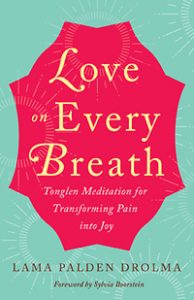 An excerpt from LOVE ON EVERY BREATH by Lama Palden Drolma
An excerpt from LOVE ON EVERY BREATH by Lama Palden Drolma Lama Palden Drolma is the author of Love on Every Breath. A licensed psychotherapist, spiritual teacher, and coach, she has studied Buddhism in the Himalayas with some of the most preeminent Tibetan masters of the twentieth century. Following a traditional three-year retreat under his guidance, Kalu Rinpoche authorized her to become one of the first Western lamas. She subsequently founded the Sukhasiddhi Foundation, a Tibetan Buddhist teaching center in Fairfax, California. Visit her online at
Lama Palden Drolma is the author of Love on Every Breath. A licensed psychotherapist, spiritual teacher, and coach, she has studied Buddhism in the Himalayas with some of the most preeminent Tibetan masters of the twentieth century. Following a traditional three-year retreat under his guidance, Kalu Rinpoche authorized her to become one of the first Western lamas. She subsequently founded the Sukhasiddhi Foundation, a Tibetan Buddhist teaching center in Fairfax, California. Visit her online at 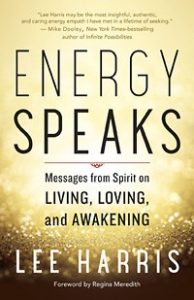
 An excerpt taking from The Letter Code:
An excerpt taking from The Letter Code: 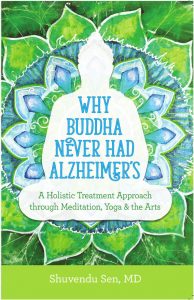 Guest post by Dr. Sen
Guest post by Dr. Sen Shuvendu Sen, MD, is Director, Medical education, and Associate Program Director, Internal Medicine Residency Program at Raritan Bay Medical Center, Meridian Hackensack University. Dr. Sen has been named to America’s Best Physicians, as well as many national and regional awards for received the Oscar E. Edwards Award from the American College of Physicians, as well as many national and regional awards for research, teaching, and community contribution.
Shuvendu Sen, MD, is Director, Medical education, and Associate Program Director, Internal Medicine Residency Program at Raritan Bay Medical Center, Meridian Hackensack University. Dr. Sen has been named to America’s Best Physicians, as well as many national and regional awards for received the Oscar E. Edwards Award from the American College of Physicians, as well as many national and regional awards for research, teaching, and community contribution.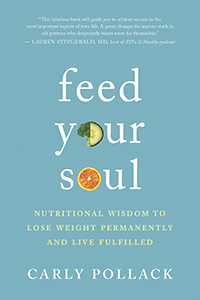 There are countless diets, cleanses, and 30-day challenges all geared to help people lose weight, heal their digestion, and feel more energy. Yet, these temporary protocols fall short when it comes to true transformation. With all of the nutrition guidance available, why do millions of people weigh more than they want and feel anxious and depressed about it?
There are countless diets, cleanses, and 30-day challenges all geared to help people lose weight, heal their digestion, and feel more energy. Yet, these temporary protocols fall short when it comes to true transformation. With all of the nutrition guidance available, why do millions of people weigh more than they want and feel anxious and depressed about it? Carly Pollack is the author of Feed Your Soul and is the founder of Nutritional Wisdom, a thriving private practice based in Austin, Texas. A Certified Clinical Nutritionist with a master’s degree in holistic nutrition, Carly has been awarded Best Nutritionist in Austin five years running and has helped over 10,000 people achieve their health and happiness goals. Visit her online at www.carlypollack.com
Carly Pollack is the author of Feed Your Soul and is the founder of Nutritional Wisdom, a thriving private practice based in Austin, Texas. A Certified Clinical Nutritionist with a master’s degree in holistic nutrition, Carly has been awarded Best Nutritionist in Austin five years running and has helped over 10,000 people achieve their health and happiness goals. Visit her online at www.carlypollack.com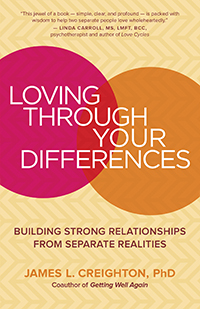 An excerpt from Loving through Your Differences by James L. Creighton, PhD
An excerpt from Loving through Your Differences by James L. Creighton, PhD James L. Creighton, PhD, is the author of Loving through Your Differences and several other books. He has worked with couples and conducted communications training for nearly 50 years around the world. Visit him online at www.jameslcreighton.com.
James L. Creighton, PhD, is the author of Loving through Your Differences and several other books. He has worked with couples and conducted communications training for nearly 50 years around the world. Visit him online at www.jameslcreighton.com.